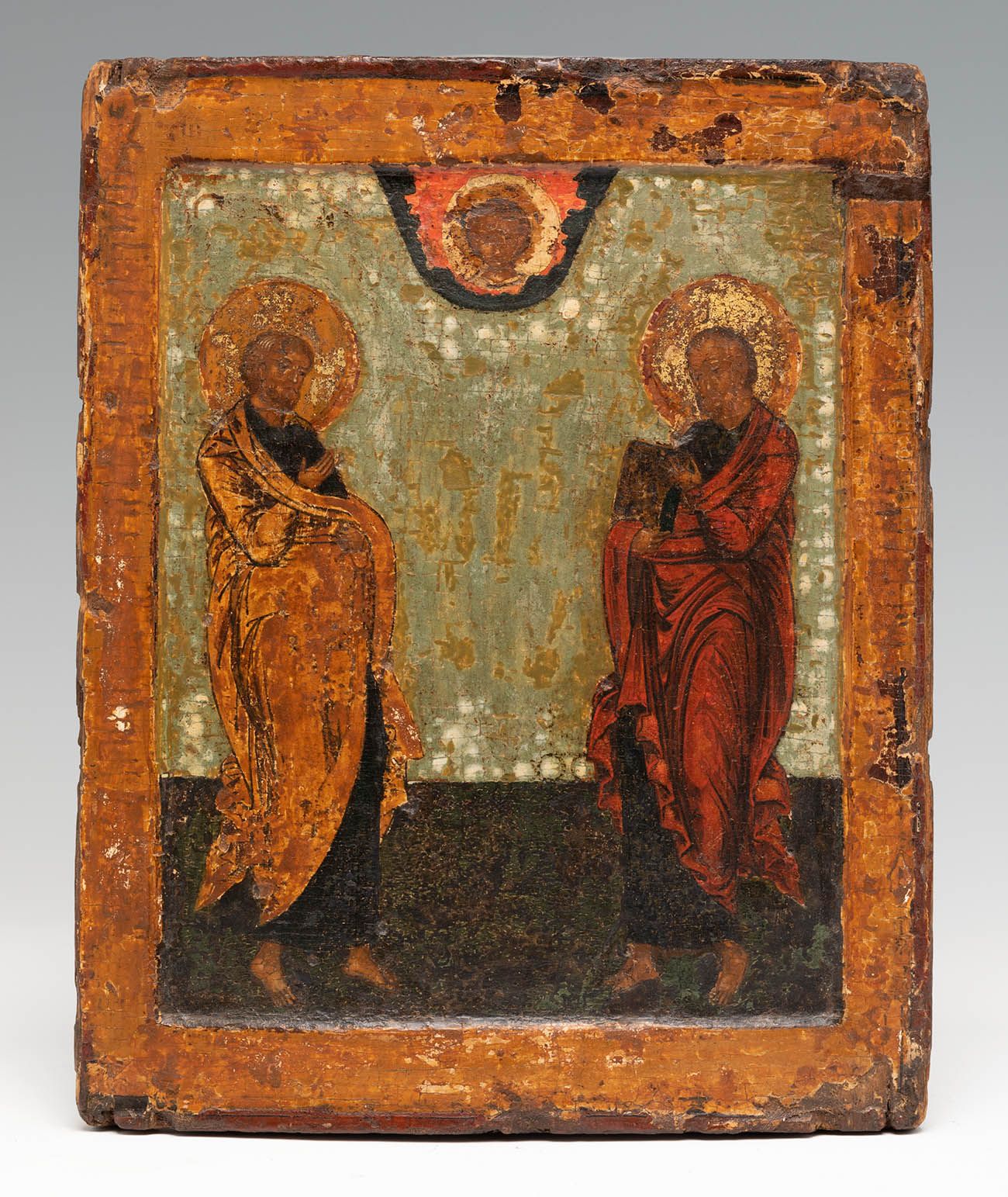Description
Russian school, 18th century. "St. Peter and St. Paul. Tempera on panel. Measurements: 30,5 x 25 cm. The apostles Peter and Paul are some of the earliest, most represented and most recognised saints in the whole Christian iconography. The iconographic tradition of these two apostles comes to medieval Russian painting from the Byzantine Empire, where they used to be represented in the proto-Christian catacombs as early as the 3rd century. In canonical iconography they are distinguished not only by the characteristic appearance of the apostles. The Apostle Paul holds a closed book in a precious case, Peter has a rolled-up scroll as a symbol of his apostolic writings, a long golden staff and golden keys, but variations are also accepted when his hand is wrapped in the chiton, as in the auctioned icon. Just above the apostles, in the upper central register, is an image of the Saviour blessing with the Gospel in his left hand. The Apostle Peter repeats the gesture of Christ's blessing, and the Apostle Paul's right hand is at chest level as if blessing himself with the sign of the cross. The figures of the apostles are slightly turned towards each other and towards the Saviour between them. The classical representation is of a full-length standing figure. The icon of interest follows the prototype established in Russia around the middle of the 11th century, following the prototype of the icon of the Cathedral of St Sophia in Novgorod, one of the oldest and largest Russian icons known to this day, and preserved in the Novgorod Historical Museum. The greenish colour of the background places the icon chronologically around the 18th century, when this tone began to become popular among painters, precisely for polychroming large backgrounds.
33
Russian school, 18th century. "St. Peter and St. Paul. Tempera on panel. Measurements: 30,5 x 25 cm. The apostles Peter and Paul are some of the earliest, most represented and most recognised saints in the whole Christian iconography. The iconographic tradition of these two apostles comes to medieval Russian painting from the Byzantine Empire, where they used to be represented in the proto-Christian catacombs as early as the 3rd century. In canonical iconography they are distinguished not only by the characteristic appearance of the apostles. The Apostle Paul holds a closed book in a precious case, Peter has a rolled-up scroll as a symbol of his apostolic writings, a long golden staff and golden keys, but variations are also accepted when his hand is wrapped in the chiton, as in the auctioned icon. Just above the apostles, in the upper central register, is an image of the Saviour blessing with the Gospel in his left hand. The Apostle Peter repeats the gesture of Christ's blessing, and the Apostle Paul's right hand is at chest level as if blessing himself with the sign of the cross. The figures of the apostles are slightly turned towards each other and towards the Saviour between them. The classical representation is of a full-length standing figure. The icon of interest follows the prototype established in Russia around the middle of the 11th century, following the prototype of the icon of the Cathedral of St Sophia in Novgorod, one of the oldest and largest Russian icons known to this day, and preserved in the Novgorod Historical Museum. The greenish colour of the background places the icon chronologically around the 18th century, when this tone began to become popular among painters, precisely for polychroming large backgrounds.
